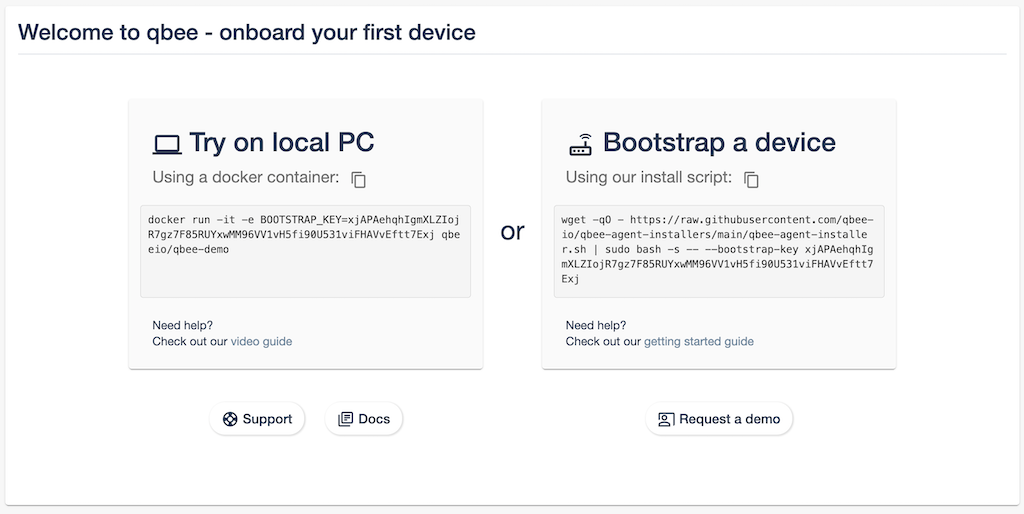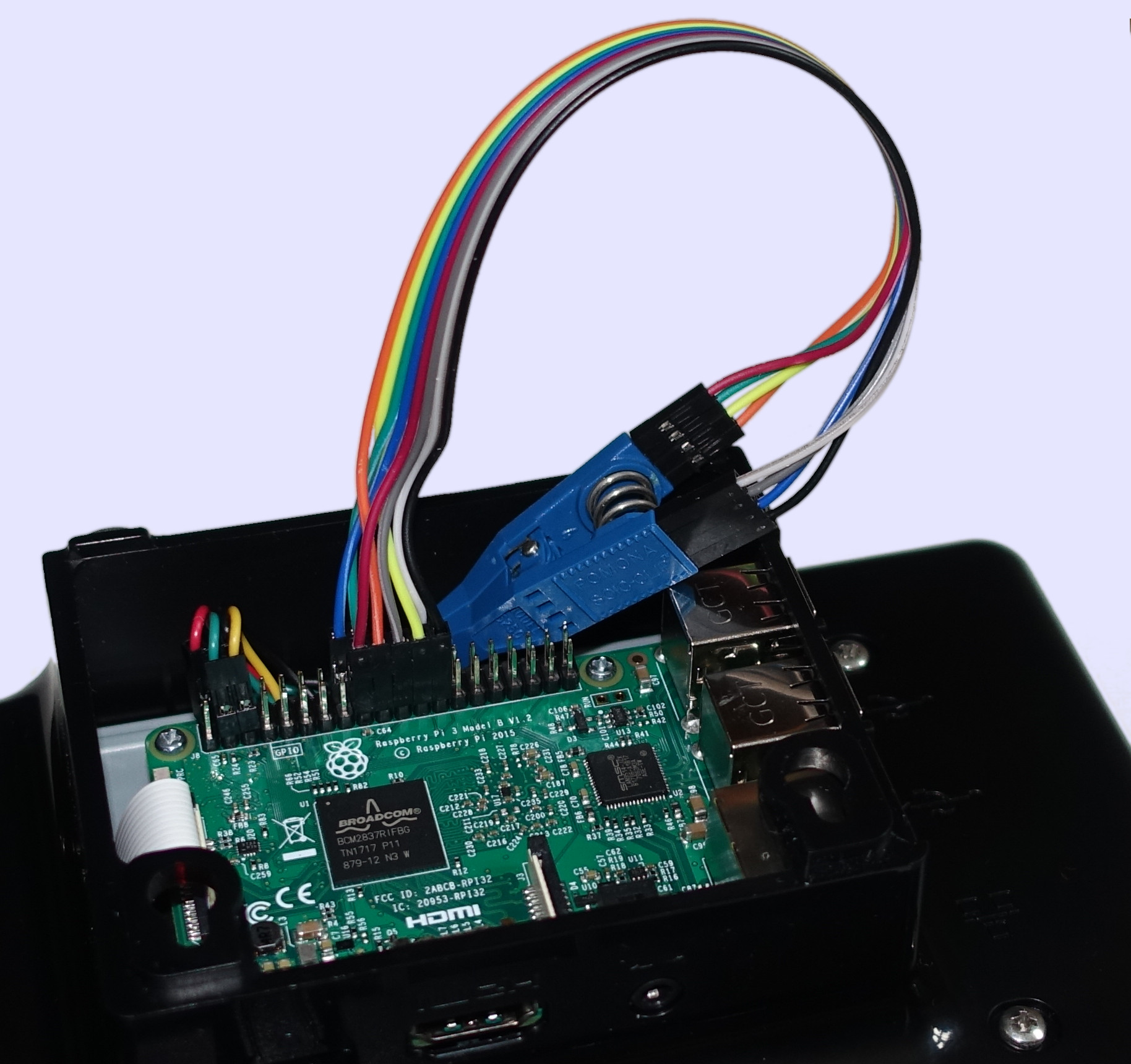Raspberry Pi device management has become an essential topic for tech enthusiasts, hobbyists, and professionals alike. Whether you're setting up a single Raspberry Pi or managing a fleet of devices, understanding how to handle these versatile machines efficiently is crucial. In this article, we will explore everything you need to know about Raspberry Pi device management, from the basics to advanced techniques.
As the Internet of Things (IoT) continues to expand, the Raspberry Pi has emerged as one of the most popular platforms for creating innovative projects. From home automation systems to industrial applications, the Raspberry Pi's flexibility makes it an ideal choice for developers. However, managing multiple Raspberry Pi devices can be challenging without the right strategies and tools.
This article aims to provide a detailed and actionable guide to Raspberry Pi device management. By the end, you'll have a clear understanding of the best practices, tools, and techniques to keep your Raspberry Pi devices running smoothly and securely. Let's dive in!
Read also:7 Movie Rulzcom Kannada Your Ultimate Guide To Kannada Movies
Table of Contents
- Introduction to Raspberry Pi Device Management
- Overview of Raspberry Pi
- Common Challenges in Raspberry Pi Device Management
- Essential Tools for Managing Raspberry Pi Devices
- Setting Up Remote Access for Raspberry Pi
- Securing Your Raspberry Pi Devices
- Fleet Management for Multiple Raspberry Pi Devices
- Managing Software Updates on Raspberry Pi
- Backing Up Raspberry Pi Devices
- Best Practices for Raspberry Pi Device Management
- Conclusion and Next Steps
Introduction to Raspberry Pi Device Management
Raspberry Pi device management refers to the process of organizing, monitoring, and maintaining Raspberry Pi devices effectively. Whether you're managing a single device or a large fleet, proper management ensures optimal performance, security, and efficiency.
One of the key aspects of Raspberry Pi device management is ensuring that all devices are up to date with the latest software and security patches. This is particularly important in IoT applications, where outdated software can lead to vulnerabilities and potential breaches.
Additionally, remote access and automation play a significant role in managing Raspberry Pi devices. With the right tools and strategies, you can streamline operations, reduce manual effort, and enhance productivity.
Overview of Raspberry Pi
Raspberry Pi is a series of small single-board computers developed by the Raspberry Pi Foundation. These devices are designed to promote the teaching of basic computer science in schools and developing countries. However, their affordability and versatility have made them popular among hobbyists, developers, and professionals worldwide.
Key Features of Raspberry Pi
- Compact Size: Raspberry Pi devices are small, making them ideal for portable and embedded applications.
- Cost-Effective: With prices starting as low as $35, Raspberry Pi offers excellent value for money.
- Versatility: Raspberry Pi supports a wide range of operating systems, programming languages, and applications.
- Community Support: A vibrant community of developers and enthusiasts provides extensive resources and support.
Understanding the capabilities and limitations of Raspberry Pi is crucial for effective device management. By leveraging its strengths, you can create robust and scalable solutions for various projects.
Common Challenges in Raspberry Pi Device Management
Managing Raspberry Pi devices comes with its own set of challenges. Below are some of the most common issues you may encounter:
Read also:4movierulz Telugu 2024 The Ultimate Guide To Your Favorite Telugu Movies
- Scalability: As the number of devices increases, managing them individually becomes impractical.
- Security: Ensuring that all devices are secure against potential threats requires constant vigilance.
- Software Updates: Keeping all devices updated with the latest software and patches can be time-consuming.
- Remote Access: Providing secure and reliable remote access to devices is essential for efficient management.
Addressing these challenges requires a combination of the right tools, strategies, and best practices. In the following sections, we will explore solutions to overcome these obstacles.
Essential Tools for Managing Raspberry Pi Devices
To manage Raspberry Pi devices effectively, you need the right tools. Below are some of the most popular tools used for Raspberry Pi device management:
1. BalenaCloud
BalenaCloud is a powerful platform for managing fleets of IoT devices, including Raspberry Pi. It offers features such as remote access, software updates, and monitoring, making it ideal for large-scale deployments.
2. Resin.io
Resin.io (now part of Balena) provides a comprehensive solution for managing Raspberry Pi devices. It supports automated deployments, secure communication, and over-the-air updates.
3. Pi-Point
Pi-Point is a lightweight tool designed specifically for managing Raspberry Pi devices. It allows you to monitor and control multiple devices from a single interface.
By selecting the right tools, you can simplify the management process and focus on developing innovative solutions.
Setting Up Remote Access for Raspberry Pi
Remote access is a critical component of Raspberry Pi device management. It allows you to monitor and control devices from anywhere, saving time and effort. Below are some methods for setting up remote access:
1. SSH (Secure Shell)
SSH is a secure protocol for accessing Raspberry Pi devices remotely. To enable SSH, you can modify the configuration file or use the Raspberry Pi Imager tool during the setup process.
2. VNC (Virtual Network Computing)
VNC allows you to access the graphical interface of your Raspberry Pi device remotely. This is particularly useful for applications that require a GUI.
3. Web-Based Interfaces
Some tools, such as Pi-Point and BalenaCloud, offer web-based interfaces for managing Raspberry Pi devices. These interfaces provide a user-friendly way to monitor and control devices from any device with an internet connection.
Choosing the right remote access method depends on your specific needs and the nature of your projects.
Securing Your Raspberry Pi Devices
Security is a top priority when managing Raspberry Pi devices. Below are some best practices for securing your devices:
- Use Strong Passwords: Avoid using default passwords and ensure that all user accounts have strong, unique passwords.
- Enable Firewall: Configure a firewall to restrict access to your Raspberry Pi devices and protect against unauthorized access.
- Keep Software Updated: Regularly update the operating system and all installed software to patch vulnerabilities.
- Limit Access: Restrict access to your Raspberry Pi devices to authorized users only.
By implementing these security measures, you can protect your devices and ensure the integrity of your projects.
Fleet Management for Multiple Raspberry Pi Devices
Managing a fleet of Raspberry Pi devices requires a structured approach. Below are some strategies for effective fleet management:
1. Centralized Monitoring
Use a centralized monitoring system to keep track of all devices in your fleet. This allows you to identify issues quickly and take corrective action.
2. Automated Deployments
Implement automated deployment processes to streamline software updates and configuration changes across all devices.
3. Scalable Solutions
Choose tools and platforms that can scale with your growing fleet. This ensures that your management system remains efficient as the number of devices increases.
By adopting these strategies, you can manage your Raspberry Pi fleet effectively and efficiently.
Managing Software Updates on Raspberry Pi
Keeping your Raspberry Pi devices up to date is essential for maintaining performance and security. Below are some tips for managing software updates:
1. Automate Updates
Use tools like cron jobs or automated deployment platforms to schedule regular updates for your devices.
2. Test Updates Before Deployment
Before deploying updates to your entire fleet, test them on a small group of devices to ensure compatibility and stability.
3. Monitor Update Status
Keep track of the update status of all devices to ensure that they are running the latest software versions.
By following these tips, you can ensure that your Raspberry Pi devices remain up to date and secure.
Backing Up Raspberry Pi Devices
Backing up your Raspberry Pi devices is crucial for data recovery and disaster preparedness. Below are some methods for backing up your devices:
1. SD Card Imaging
Create an image of your SD card to preserve the current state of your Raspberry Pi device. This allows you to restore the device to its previous state if needed.
2. Cloud-Based Backups
Use cloud-based solutions to store backups of your Raspberry Pi devices. This provides an additional layer of security and ensures that your data is accessible from anywhere.
3. Regular Backups
Schedule regular backups to ensure that your data is always up to date. This minimizes the risk of data loss in the event of a failure.
By implementing a robust backup strategy, you can protect your data and ensure business continuity.
Best Practices for Raspberry Pi Device Management
Below are some best practices for managing Raspberry Pi devices:
- Document Everything: Keep detailed records of your devices, configurations, and updates to simplify troubleshooting and maintenance.
- Regular Maintenance: Perform regular maintenance tasks, such as cleaning up unused files and optimizing performance.
- Stay Informed: Stay up to date with the latest developments in Raspberry Pi technology and best practices for device management.
- Collaborate with the Community: Engage with the Raspberry Pi community to share knowledge, learn from others, and stay informed about new tools and techniques.
By following these best practices, you can manage your Raspberry Pi devices effectively and achieve optimal results.
Conclusion and Next Steps
Raspberry Pi device management is a critical aspect of maintaining and optimizing your projects. By understanding the challenges, tools, and best practices involved, you can streamline your management processes and achieve greater efficiency.
To take your Raspberry Pi device management to the next level, consider exploring advanced topics such as containerization, orchestration, and machine learning. These technologies can enhance the capabilities of your devices and open up new possibilities for innovation.
We invite you to share your thoughts and experiences in the comments section below. Additionally, feel free to explore other articles on our site for more insights into Raspberry Pi and related technologies. Together, let's build a smarter, more connected world!

